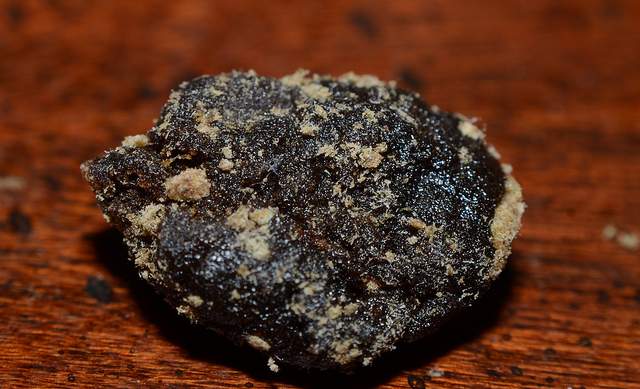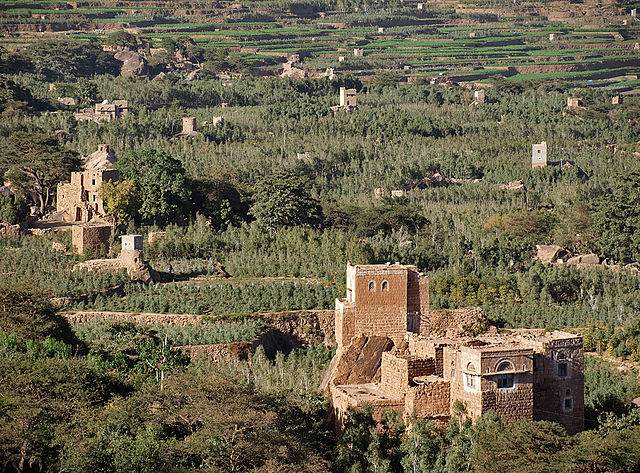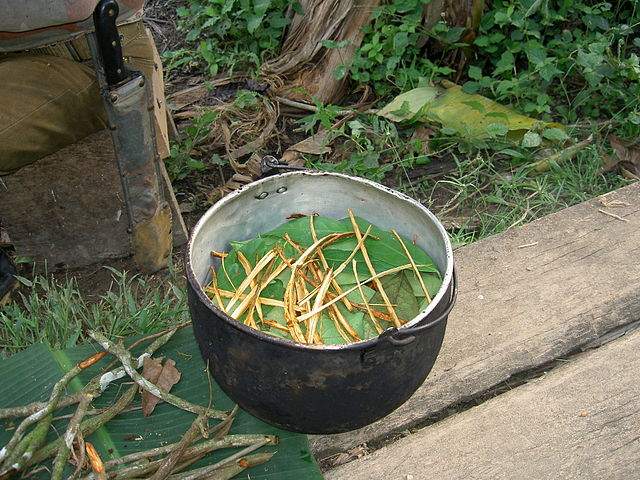Journeying to new cultures can certainly divert you onto new paths of thinking, but imbibing the often forbidden substances that those cultures hold sacred can catapult your new wet learning mind into another dimension entirely. After all, they don’t call it “taking a trip” for nothing.
Should you choose to take the red pill instead of the blue pill, to turn yourself inside out and wander to psychotropic landscape of your chosen environment, here’s a guide to get you going — eight bizarre drugs and the cultures that use them.
[social]
Psychedelic Iboga (West-Central Africa)

Iboga is a rainforest shrub native to West-Central Africa whose alkaloid-containing root bark is chewed for various pharmacological or ritualistic purposes. It causes stimulative effects in small doses and induces hallucinations in larger ones.
An Iboga experience typically delineates into two phases: a vivid hallucinogenic visual phase (sort of like dreaming while fully conscious) that lasts roughly four hours, followed by an introspective phase, during which memories, life experiences, and past trauma can be explored and processed from a seemingly privileged vantage point.
The Iboga root is essential to the Bwiti spiritual practice, a syncretistic belief system that incorporates animism, ancestor worship, and Christianity. Bwiti, who utilize Iboga roots in a number of ceremonies, is practiced in countries such as Gabon, Cameroon, and the Republic of the Congo. In these places it has been used for hundreds of years in Rite of Passage ceremonies, initiation rites and acts of healing, during which it is said to produce complex visions and insights that are valuable to the initiate and the community.
Massive doses of Iboga are taken especially during initiation, and thereafter consumed on a more regular basis in connection with rituals and tribal dances.
Iboga is illegal in the US and most European countries, but it is possible (though not exactly easy) to arrange to take part in an Iboga initiation in countries where Bwiti is practiced.
Find a cheap international flight to Cameroon and check out our Cameroon Travel Guide
Peyote (United States / Mexico)

This cute little button cactus, native to southwestern Texas and Mexico, is saturated with psychoactive alkaloids and known for its hallucinogenic affects when ingested. It is used worldwide as an entheogen and supplement to various spiritual practices.
Peyote, which blossoms pink flowers from March to May, has a long history of ritualistic and medicinal use by indigenous Americans, who have employed it for thousands of years to treat various ailments (documented evidence of its religious, ceremonial, and healing uses date back 2000 years among some Native American tribes).
As part of a revival of native spirituality in the 19th century, many American Indian began to revive the use of peyote in religious practices under the patronage of the Native American Church, which eventually led to efforts by US authorities to ban religious rituals involving peyote. Today, however, the Native American Church is one among several religious organizations that can use peyote as part of its religious practice legally.
The effects of peyote last roughly 10-12 hours and trigger a state of intense introspection and insight that is often described as being of a metaphysical or spiritual nature.
United States federal law (and many state laws) protect the harvest, possession, consumption, and cultivation of peyote as part of “bonafide religious ceremonies”, but only for use by Native American persons. Non-Natives attempting to establish spiritual centers based on the consumption of peyote as a sacrament, such as the Peyote Foundation in Arizona, have been prosecuted
Check out our Canyons and Indian Lands adventure trip
Charas (Afghanistan/Pakistan/Nepal/India)
Charas is a hashish form of marijuana that is hand-made from the resin of the cannabis plant in Afghanistan, Pakistan, Nepal, and India.
For thousands of years it has been used across the Indian sub-continent for medicinal and religious purposes, and was even sold in government shops throughout India until the 1980s, at which time it was made illegal under pressure from the US government.
Despite its illegality, charas continues to play an important role in the rituals and culture of certain sects of the Hindu religion, especially among the Shaivas — a sub-division of Hinduism where hashish is venerated as one aspect of the character of Lord Shiva.
Today possession of charas risks a ten-year prison sentence in India, though this has been somewhat relaxed in recent years, and its enforcement remains a popular medium for corrupt police officers to extort money from its users.
It still remains quite popular; however, especially amongst Indian sadhus, many of whom smoke it freely as part of their religious asceticism. It is readily available in several places around India, especially where there is a strong concentration of tourists, such as in Goa, Delhi, Rishikesh, and Varanasi.
Book international airfare to India and read Beyond the Golden Triangle: 8 Lesser Known Sights in Rajasthan, India
Khat (Horn of Africa)
Khat (rhymes with pot) is a flowering plant native to the Horn of Africa and the Arabian Peninsula,whose leaves have been used for nearly a thousand years by Muslims throughout the region as an alternative to alcohol and other substances forbidden by the Koran. Its exact origin is uncertain, though some argue it was first cultivated in Ethiopia. The ancient Egyptians considered it a “divine food” capable of making its user “god-like”.
It contains minute quantities of cathinone, an alkaloid that stimulates mental activity much like amphetamine before rippling the user onto a wavelength of stoned introspection and sometimes manic hyperactivity. Its fresh leaves and tops are chewed or dried and consumed as tea in order to achieve this state of euphoria.
It is banned in the US, parts of Europe, and much of the Middle East, but perfectly legal in a handful of countries lining both sides of the Red Sea.
To give you some idea of its popularity in the region: in Yemen roughly 60% of the arable land is devoted to khat plantations; in Somalia khat was used to pay the militiamen who battled US Rangers and Delta Forces in Mogadishu in 1993; in Djibouti citizens spend roughly $170 million on khat every year, which equals out to some $700-$1800 a year for the average family, or 10-19% of a household’s income, which — in a country with an unemployment rate of over 50% — doesn’t leave much money for many other things, such as food.
Read 10 Unspoiled Beaches for your RTW Trip
Bhang (India)

Pronounced BANG!, Bhang is a specially prepared mixture of leaves and buds from the female cannabis plant found throughout India. It is either smoked or consumed in liquid form via scrumptious yogurt-based Lassis.
Bhang has been used as an intoxicant for centuries throughout the sub-continent and is distributed openly as a religious offering during festivals such as Holi, during which consuming Bhang has become standard practice.
Sadhus and Sufis are known to use Bhang to enhance meditation and achieve transcendental states of spiritual ecstasy. In the ancient Atharvaveda, a sacred Hindu text, Bhang is described as a beneficial herb that “releases anxiety”. In India the drug is associated with Shiva and has played an important role in religious life as a sacred inebriant.
It is legal is some Indian states, where it can be found in government shops. It is especially prominent during Holi.
Ayahuasca (Amazon Region)
The word Ayahuasca means “vine of the souls”. It is considered by many to be the queen of all hallucinogens and is perhaps the closest non-astronauts will ever come to entering outer space.
The substance, which is imbibed as a tea, is a psychoactive infusion of dimethyltryptamine (DMT) and an MAO inhibitor and has been consumed for divinatory and healing purposes for millennia in the Amazon region of South America. In the 16th century Christian missionaries from Spain and Portugal who first encountered indigenous peoples using the drug thought they were possessed by devils.
Whereas most of the hallucinogens mentioned in this list can be used for recreational purposes (allowing users the possibility of interfacing with others during intoxication should they want to), with ayahuasca you pretty much lose that capacity completely. Consuming it hurls you into a very intense experience, and it is only recommended within an environment where one feels safe and secure.
Laws concerning the drug vary and are somewhat complex. In countries such as Peru, Ecuador, and Brazil one can find shamanistic lodges that brew ayahuasca and will guide you through its consumption with relative ease. In most other countries, including the US, the plants that make up ayahuasca are legal (and can be ordered over the internet), but once brewed the DMT you have extracted in your tea becomes illegal.
Check out these Ecuador adventure trips and read the Incredible National Parks of Ecuador
Magic Mushrooms (the Netherlands)
Probably the most popular psychoactive drug outside of marijuana, magic mushrooms have long played a role in native cultures around the world, being used as a sacrament in rituals aimed to facilitate visionary states and bring about mental and physical healing.
There are hundreds of different types of mushrooms that can bring about a trip, but fungus containing the psychoactive compounds psilocybin and psilocin (openly available in smart shops in some parts of the world or on the black market in countries where they have been outlawed) tend to be the most commonly used.
When ingested, magic mushrooms are capable of bringing about profound and life-changing insights, sometimes described by the spiritual as “mystical experiences”.
In a double-blind study done by the Johns Hopkins Hospital, one-third of the subjects reported that ingestion of psychedelic mushrooms was the single most spiritually significant event of their lives. Over two-thirds reported it among their five most meaningful and spiritually significant events, while another third reported extreme anxiety that went away after a short period of time.
For many, the mecca of mushroom tourism has long been Amsterdam. However, in November 2008 the sale of more than 200 different mushrooms were forbidden by law. But while several sorts of mushrooms were not placed on the ban list, smart shops continue now and then to sell them.
Magic truffles, which are also called Philosopher’s Stone and contain psilocybin, are still available, though they tend to last about half as long as mushrooms, and the affects are often milder.
Find a hostel in Amsterdam, find a cheap international flight to Amsterdam, and read The First-Time Guide to Renting a Bike in Amsterdam
San Pedro Cactus (Peru)
San Pedro is a columnar cactus native to the Andes region of South America that has been used for healing and religious divination in Peru and other countries for over 3000 years.
The cactus, particularly its skin (which can be peeled, dried and made into a powder for consumption), contains a number of alkaloids including the chemical mescaline, the psychedelic intoxicant and entheogen that is also found in peyote.
Whereas in the West the use of mescaline is often done for recreational purposes, in the Andean region the shamanic healing sessions that use it are taken very seriously, and it is even widely considered to be a strong medicine against alcoholism.
It is legal to cultivate San Pedro in most countries, as it is often used for ornamental decoration, but in countries where possession of mescaline and related compounds is illegal and highly penalized, cultivation for the purposes of consumption is most likely illegal and penalized. This includes the US, Australia, Canada, Sweden, Germany, and New Zealand, among others.
Your best bet is to head to the Andes mountains in Northern Peru, where all-night shamanic rituals take place year-round in high-altitude rural lodges frequented by middle-aged women from all over the country.
Find international airfare to Peru and read Seven of the Best Eco-friendly Experiences in South America and the Step-by-Step Guide to Visiting Machu Picchu
Photo Credits: Iboga by Kim Gjerstad; Peyote by Frank Vincentz; Charas by JosephAdams; Khat by Antti Salonen; Bhang by Tom Maisey; Ayahuasca by Terpsichore; Magic Mushrooms by Erik Fenderson ; San Pedro Cactus by Ajor933





